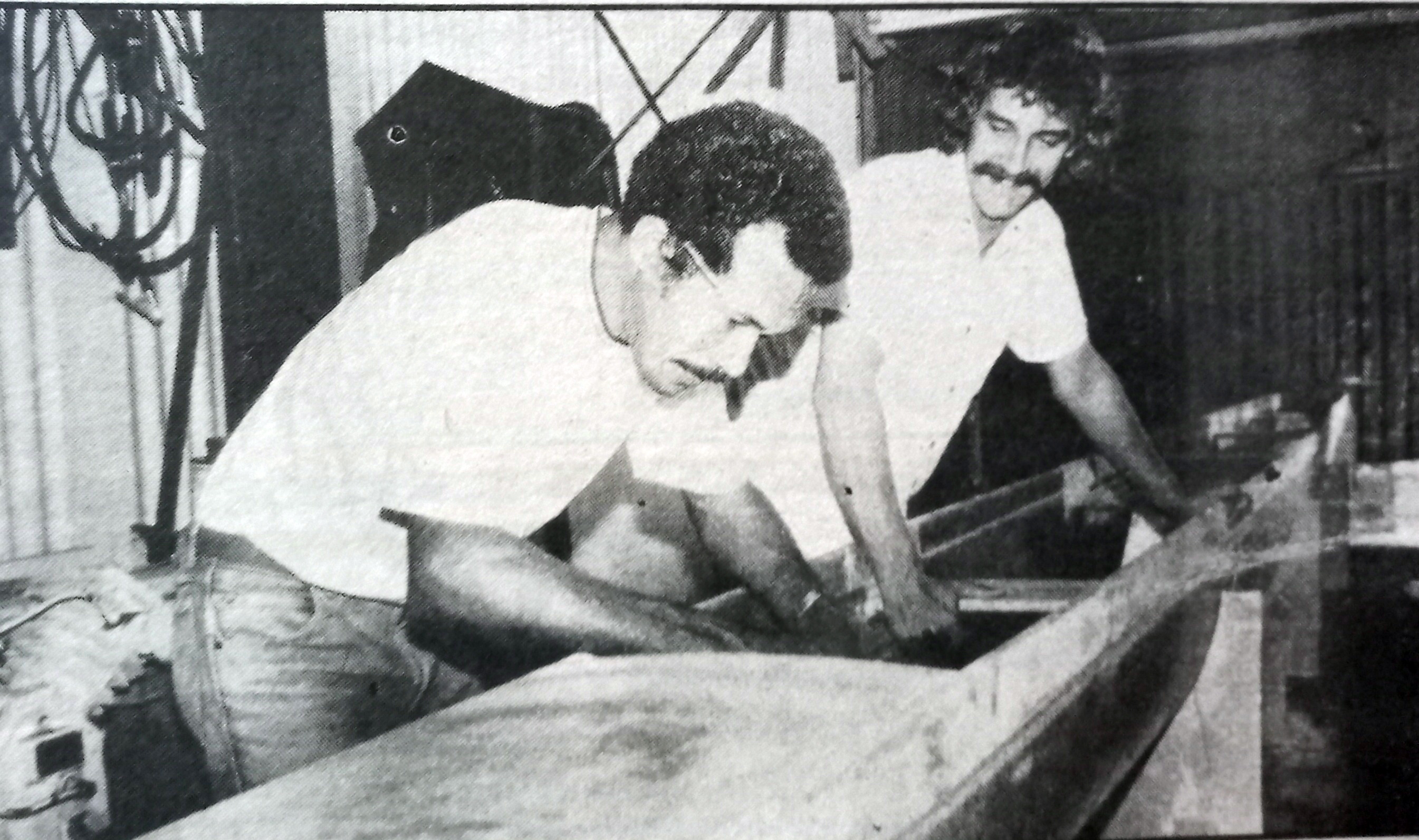The joining of the expertise of George Marlow, an airline pilot, and Tailasa Tupou, a shipwright, saw them become the first to build a racing canoe in Fiji. Work on the canoe started in late November 1984.
An article in The Fiji Times on March 20, 1985 said the duo hoped to complete the canoe by the end of the month.
“The first one takes a little longer to build than the usual ones,” Mr Marlow said.
A skilled craftsman would take at least three weeks to build one of these canoes, but being a prototype, this one had taken longer.
With only a part-time boat-building experience, Mr Marlow outlined the finer acts of canoe-building with ease.
“I am doing this more as a hobby more than anything else,” he shared.
He worked on canoes on a part-time basis as an overseer. For a person who spent most of his time in the air, Mr Marlow said what fascinated him the most was the method of constructing the canoe.
Normally, plywood was the basic material for building boats, but in this case, the hull of the canoe was made from PVC foam that was much lighter.
The PVC foam was sandwiched between layers of fibreglass to give it the durability and flexibility that every boatbuilder looked for.
“This totally modern approach, which had been introduced to boatbuilding, provided strength for lower weight.”
A consultant from New Zealand, Jeff Hobs, who heard of the construction while visiting Fiji, gave expert advice to the builders.
The canoe was designed by Herb Kane from Hawaii and was believed to be the world’s foremost authority in South Pacific canoes. Mr Cane had designed many racing canoes in the South Pacific that were used in races in Hawaii and Tahiti.
The managing director of Tradewinds Marine Ltd, Tony Philp, had met Mr Herb 12 years prior and had said the canoes were very similar to racing canoes in Hawaii.
“What made it unique were the efforts by the boat builders who tried to keep it as close to the traditional “Fijian takia” as possible,” Mr Philp said.
The canoe was 15 metres long, 55cm wide, and 50cm deep. It also had an outrigger which was six metres long.
The gigantic canoe, which was much bigger than what you would expect to find in Hawaiian races, accommodated six rowers.
Commenting on the stability of the canoe, Mr Marlow said it would be as stable as a motorbike with a sidecar and was likely to be a favourite with the sports folks.
The canoe weighed about 200 kilograms on completion, one-eighth lighter than the traditional ones carved out of tree trunks.
The oar was also very similar to those of Fijian traditional design, having a soft base. The oar was laminated with hardwood to make it strong and light.
With six people rowing, the canoe was expected to have a speed of more than 10 knots. Born on the island of Totoya in the Lau Group, Mr Tupou acquired his skills early as a technical student at Lomaloma Provincial School. Just like good wine, he had matured into an excellent craftsman over time.
He had been working for Charles Whippy and company from 1975 to 1978 when he decided to work for Mr Philp’s company.
He remained there since. One of the highlights of Mr Tupou’s career was working as a ship carpenter on a Canadian tourist ship, West Star, thus gaining experience around the world.
Mr Tupou said the closest he had got to building a canoe was when he built a double-hulled canoe for Toberua Island Resort. He said he had learnt a lot from that project and could build any canoe with ease and without any supervision.
One major problem that boat-builders faced was the adverse weather conditions. The polyester resin, which was used to stick the fibreglass to the PVC foams, required cool and dry
weather for “curing”.
Mr Philp, who intended to market canoe in Fiji, reckoned the canoe could be used for sports as well as recreation and estimated the price to be about $3000.
He said there was a canoe racing competition in Hawaii called the Molokai Race, and was held annually.



